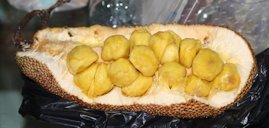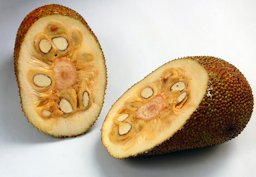| Chempedak - Artocarpus integer | |||||||||||||||||||||||||||||
|---|---|---|---|---|---|---|---|---|---|---|---|---|---|---|---|---|---|---|---|---|---|---|---|---|---|---|---|---|---|
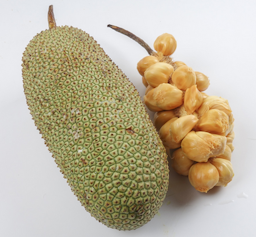 Fig. 1  Articarpus integer, chempedak Fig. 2  A cut-open cempedak fruit, Artocarpus integer, showing the fleshy pulp inside Fig. 3  The fruit (syncarp) is formed by multiple fruits Fig. 4 Leaf habit Fig. 5  Stipules of chempedak, A. integer. Bogor, West Java, Indonesia. 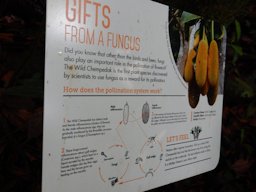 Fig. 12  The wild Chempedak is the first plant species discovered by scientists to use fungus as a reward for its pollinators. Central Catchment Nature Reserve, Singapore.  Fig. 14  Cempedak A. integer. Chestnut Nature Park, Singapore. Fig. 15  Mature fruit on tree  Fig. 16  A. integra (Thunb.) Merr., Mauritius, Grand Port district, Mahébourg Fig. 24 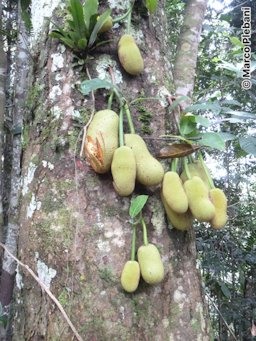 Fig. 25  Cempedak, A. integer. Sarawak, Malaysia. 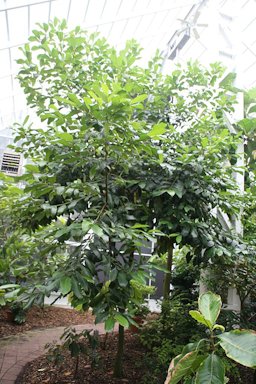 Fig. 26  A. integer. Fairchild Tropical Botanic Garden, Miami, FL USA. 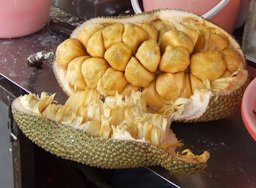 Fig. 27  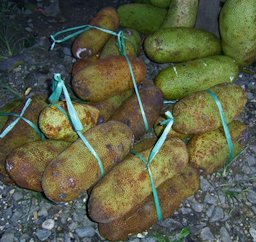 Fig. 28  For sale on roadside in East Kalimantan, Indonesia 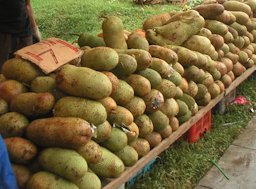 Fig. 29  Cempedak mesti ada. Senai, Johor, Malaysia. |
Scientific
name Artocarpus integer (Thunb.) Merr. Common names English: chempedak, jack tree, cempedak, small jackfruit; Burmese: sonekadat; Hindi: kathar, kathal; Indonesian: baroh, chempedak, campada, campedak; Javanese: comedak, cempedak, campedak; Malay: chempedak, baroh, bankong; Tamil: chakka, pilual; Thai: champada; Vietnamese: mit to nu; Swedish: champedak 1,3 Synonyms A. champeden (Lour.) Spreng., A. champeden (Lour.) Stokes, A. integrifolius L. f., A. polyphema Pers., Polyphema champeden Lour. 1,2 Relatives Jackfruit, A. heterophyllus Lam.; breadfruit, A. altilis; kwai muk, A. lingnanensis; fig, Ficus sp.; mulberry, Morus sp. Family Moraceae (mulberry family) Origin India, Sri Lanka 3 USDA hardiness zones 11-12 10 Uses Food; construction; dye Height Up to 65 ft (20 m) tall 4 Crown Dense, rounded Plant habit Evergreen; conical, shapely when young; woody, untidy with age 7 Growth rate Rapid 6 Trunk/bark/branches Trunk straight, short; bark grey-brown; bumps on trunk and main limbs 4,7 Leaves Often 3-lobed when young; obovate oblong/elliptical when mature; 6-11 in. (15-28 cm) long 11 Flowers Solitary; axillary; cauliflorous or ramiflorous on short leafy shoots 4 Fruit A syncarp; cylindrical to globose; 10-17.7 x 4-6 in. (25-45 cm x 10-15 cm); yellowish-brownish to orange-green; strong smell 4 Season Malaysia: June-Aug.; Australia: Feb.-May 4 Light requirement Sun; cannot grow in the shade Soil tolerances Thrives on moist fertile well drained soils 6 pH preference Prefers 4.5-6, tolerates 4-6.5 10 Drought tolerance Prefers a fairly high water table 6 Flood tolerance Tolerates temporary waterlogging 3 Cold tolerance Strictly tropical 4 Roots Deep taproot 4 Invasive potential * None reported Known hazard All parts of the tree contains latex Reading Material Artocarpus integer, Agroforestree Database Artocarpus integer, PROSEA Foundation A Guide to Artocarpus Fruits, Archives of the Rare Fruit Council of Australia Chempedak, Artocarpus integer, Sub-Tropical Fruit Club of Qld Origin/Distribution The chempedak is widely distributed in Burma (Tenasserim), Peninsular Thailand, Peninsular Malaysia, the Lingga Archipelago, Sumatra, Borneo, Sulawesi, the Moluccas and Irian Jaya. It is also cultivated in these areas as well as in western Java. 4 Cempedak is currently limited in range to south-east Asia, with some trees in Australia and Hawai'i. The crop is restricted to wet parts such as southern Thailand where it is generally more popular than the jackfruit. 6 Description Sometimes jackfruit and chempedak are confused. Sporadically hybrids between the two occur, called 'nangka-chempedak' in Malaysia; one of these has been cloned and named 'CH/NA'. In general, chempedak has smaller and narrower fruits with thinner rind, more juicy flesh, and is darker yellow when ripe; young plants bear scattered, reddish, wiry hairs on leaves and twigs and mature plants usually are smaller than the jackfruit trees. 4 It grows up to 500-1300 m altitude, often on wet hillsides. It is strictly tropical and always restricted to regions without a distinct dry season. 4 Leaves/branches New shoots, leaf and flower stalks are covered with thin, wiry brown hairs (Fig. 5,9,11) which are up to ¼ inch long and have a row of similar hairs by each stipule scar, at the base of the leafstalk. Leaves are commonly about 6 by 3 inches, but some may be as much as 11 by 4 ½. the margins are entire or occasionally lobed in very young plants (Fig. 6) and the texture is stiff. They are medium green and dull above usually with hairs on the midrib and main veins, and below, the veins are prominent and have stiff, sometimes, hooked brown hairs on them. The leafstalk is about 1 inch long, fringed with short stiff hairs. 7 The lateral veins are in 6-10 pairs, curving forward (Fig. 8), with 0.5-1.2 in. (1-3 cm) long petiole. 6
Fig. 6. Occasionaly lobed in very young plants Fig. 7. Margins are entire Fig. 8. The lateral veins are in 6-10 pairs curving forward Fig. 9. Close-up of the dorsal view showing the hairs Fig. 10,11. New shoot covered in thin, wiry brown hairs Flowers The inflorescences are solitary and borne on the axillary position of short leafy shoots. Male heads are cylindrical, 1.2-2.2 x 0.4 in. (3-5.5 × 1 cm) in size, and are whitish-yellow in colour with 3-6 cm long peduncle. The female heads occur with simple filiform styles exserted to 0.06 in. (1.5 mm). 6 Flowers may be found at any time of year, but bloom is concentrated around one period of the year. 3 The growth of the fruits is most rapid during the first weeks following stigma emergence. Stigmas remain receptive for 1-2 weeks. 4 Pollination Whereas the female flower heads are only found on cauliflorous shoots, most male heads are formed on shoots in the periphery of the canopy. This may facilitate pollination by wind, although the pollen is sticky. Insects visit the scented male inflorescences, not the female ones which lack nectar. 4
Fig. 13. The germinating seeds with the roots that appear to be yellow in colour Fruit The green, yellow or orangish brown skin is divided into small hexagons and either smooth or covered with small protrusions. It is cylindrical in shape, 10-17.7 in. (25-45 cm) long by 4-6 in. (10-15 cm) across, 2.2-13 pds (1-6 kg) in weight. Like the jackfruit, it is a syncarp, composed of fleshy arils or segments, 1.2-1.8 in. (30-45 mm) across, colored pale yellow, yellow, orange or green. Each aril surrounds a seed. Texture is firm, somewhat fibrous, sweet and rich. Compared with jackfruit, chempedak is sweeter and has less acidity. Unlike jackfruit seeds, they have a thin, edible seedcoat. 6 The total edible portion (perianths + seeds) is 25-50% of fresh fruit weight. The total weight of all perianths of a fresh fruit varies from 0.3-2.6 pds (100-1200 g). 4 The rind is thinner than that of the jackfruit and the seeds and surrounding pulp can be extracted by cutting open the base and pulling on the fruit stalk. 11 Maturation time is 3-6 months, depending on genotype and climate. 3
Fig. 19. The fresh of the individual fruit is yellow and much softer but more pungent than the jackfruit. Fig. 20. Cempedak, A. integer. Jakarta City, Jakarta, Indonesia. Fig. 22. A. integer, fruit, from Muara Lawa, Kutai Barat, East Kalimantan, Indonesia. Varieties In Malaysia, two common fruit varieties are kapa and barka. The former has a sweet, fleshy, crisp pericarp while the latter is inferior and has a thin mucilage and sour pericarp. A. integer seeds are rich in starch and are eaten. 3 In Malaysia a number of selections have been cloned; among the resulting cultivars 'CH29' shows promise because of its attractive orange flesh; 'CH26' ('Paya Jaras'), 'CH27' and 'CH28' are high-yielding cvs. 4 Harvesting Harvesting is simple because the fruits are produced on the trunk and the main branches. 4 Chempedaks vary in yield, however very heavy crops are common. 6 If there is an over-supply, the fruit may be picked early and consumed as a vegetable like jackfruit. For ripe consumption, size of protuberances or smoothness of skin in some cultivars, change of skin colour, and yellowing of the peduncle (fruit stem) are all guides to maturity. The fruit peduncle will easily break at the dehiscing point and the harvest fruits, with their long thin peduncles can be ripened at home or stored for later market sale. Cool room storage will extend life. The season lasts about 6 weeks. 6 Propagation A. integer can be raised by direct sowing or planting nursery-raised container seedlings. Fresh seeds record germination rates of about 75%. Seed viability lasts several weeks. The first few nodes of the seedling often do not bear leaves. 3,4 It can be budded onto self-seedlings or jackfruit or other Artocarpus species. 11 Selected cultivars can be grafted onto chempedak or jackfruit, but seedling propagation is usual. Trees fruit in 3-5 years from planting out. 6 Culture The chempedak tree is rapid growing, and does not require a lot of care except in the early establishment phase, where microclimate control (shade, irrigation and staking) is recommended. When a few metres tall, however, full sun is recommended, since trees overshaded will grow too tall for easy harvest. 6 Pests/Diseases Young trees have thin stems, and may be damaged by wind. The bark is subject to disease attack, and tree surgery may be required in later years. Insects are not usually a problem because the leaves are protected by wiry hairs, and the immature fruit has latex in it. 6 Food Uses The fleshy perianths which surround the seeds are eaten fresh or cooked. In Malaysia 2-3 perianth-balls are pressed together, dipped in a mixture of rice-flour, sugar, milk and water, fried in oil for 10 minutes, and eaten as a delicacy. The seeds are eaten roasted or boiled (in salty water for 30 minutes) and have a nutty flavour. Young fruits are cooked in coconut milk and eaten as a curried vegetable or in soup. Young leaves are said to be used as a vegetable. 4 Both the smell and the taste of the fruit are rather overwhelming and for the uninitiated it is easier to appreciate dishes made of the seeds. 4 Nutritional Value The composition of the fruit flesh on dry weight basis per 100 g edible portion is approximately: protein 3.5-7 g, fat 0.5-2 g, carbohydrates 84-87 g, fibre 5-6 g and ash 2-4 g. Water content (fresh weight basis) is 58—85%. The composition of the seeds, also based on dry weight, is approximately: protein 10-13%, fat 0.5-1.5%, carbohydrates 77-81%, fibre 4-6% and ash 3-4%. Water content (fresh) is 46-78%. The number of seeds per fruit varies from 14-131, total seed weight per fruit from 65—880 g, weight per seed from 1-12 g. 4 Medicinal Properties ** The stem bark and roots of Artocarpus integer contain prenylated fl avones which possess cytotoxic and antimalarial activities. In traditional folkloric medicine, the Iban in Sarawak apply a paste of the inner bark to heal wounds and prevent infection. In Peninsular Malaysia, juice of the roots has been used for fever. The ash from burnt leaves, maize and coconut shell has been used to treat ulcers. An infusion of the root ash is mixed with Selaginella ash and prescribed as a protective medicine after childbirth. The bark is used in poultices for painful feet, hands and for ulcers. In the Philippines, the leaves are heated and applied to wounds. The pith has been reported to cause abortion and the wood is sedative. Unripe fruit is astringent and ripe fruit laxative. 8 Other Uses • The bark can be used to make rope and the latex for the preparation of lime. • The dark yellow to brown wood is strong and durable and is used for building construction, fur- niture, boats cabinet-work, brush-handles. In the Philippines, the wood is used for musical instruments, furniture, cabinet-work and tool-handles. In Indo-China, the Buddhist used the timber for construction of sacred buildings on account of its yellow colour. • With alum, the extract of heartwood provides a yellow dye that is moderately fast on silk. This dye is used in colouring the saffron-coloured robes of Buddhist monks in Indo-China. 3,4 Other Edibles in the Artocarpus genus: Breadfruit, A. altilis Kwai Muk, A. hypargyraeus Jackfruit, A. heterophyllus Lakoocha, A. lacucha Marang, A. odoratissimus General You can tell Chempedak plants apart from all the other Artocarpus because it is the only one that is hairy all along the stems. 5 Bill Whitman introduced Artocarpus integer, Champedak 'Malay' from Borneo to Florida in 1987. 9 List of Growers and Vendors |
||||||||||||||||||||||||||||
| Bibliography 1 "Taxon: Artocarpus integer (Thunb.) Merr." USDA, Agricultural Research Service, National Plant Germplasm System, Germplasm Resources Information Network (GRIN-Taxonomy), National Germplasm Resources Laboratory, Beltsville, Maryland, 2020, U.S. National Plant Germplasm System, www.ars-grin.gov/core/profile?symbol=ARIN17. Accessed 14 July 2020. 2 "Artocarpus integer (Thunb.) Merr." The Plant List (2010), Version 1, www.theplantlist.org. Accessed 14 July 2020. 3 Orwa, C., et al. "Artocarpus integer Thunb.) Merr." Agroforestree Database: a tree reference and selection guide, version 4.0, 2009, Agroforestry, www.worldagroforestry.org/treedb2/speciesprofile.php?Spid=241. Accessed 14 July 2020. 4 Jansen, P. C. M. "Artocarpus integer (Thunb.) Merr." Edible fruits and nuts, Plant Resources of South-East Asia No 2, Edited by Verheij, E. W. M. and Coronel, R. E., PROSEA Foundation, Bogor, Indonesia, record 1530,1991, PROSEA, (CC BY-NC-SA 3.0), www.prota4u.org/prosea/view.aspx?id=1477. Accessed 14 July 2020. 5 Hawaii, Oscar. "Chempedak Tips." Sub-Tropical Fruit Club of Qld, stfc.org.au/chempedak-tips. Accessed 15 July 2020. 6 Subhadrabandhu, Suranant. "Under-Utilized Tropical Fruits of Thailand." Food And Agriculture Organization Of The United Nations, Regional Office For Asia And The Pacific Bangkok, Thailand, RAP Pub. 2001/26, Dec. 2001, FAO, www.fao.org/3/ab777e/ab777e00.htm#Contents. Accessed 16 July 2020. 7 Molesworth Allen, Betty. Common Malaysian Fruits. Kuala Lumpur, Longman, 1975. 8 Lim T. K. "Edible Medicinal And Non-Medicinal Plants: Volume 3, Fruits." EPDF, 2012, epdf.pub/volume-3-fruits.html. Accessed 16 July 2020. 9 Whitman, William F. Five Decades with Tropical Fruit, A Personal Journey. Stuart, Quisqualis Books in cooperation with Fairchild Tropical Garden, 2001. 10 "Artocarpus integer." Plants for a Future, via Ecocrop, pfaf.org/user/Plant.aspx?LatinName=Artocarpus+integer. Accessed 19 July 2020. 11 Fruits of Warm Climates. Julia F. Morton, Miami, 1987. Photographs Fig. 1 "Artocarpus integer, Chempedak." Trade Winds Fruit, Plant Informational Database, www.tradewindsfruit.com/artocarpus-integer-chempedak-seeds. Accessed 20 July 2020. Fig. 2 EquatorialSky. "A cut-open cempedak fruit, showing the fleshy pulp inside." Wikimedia Commons, via en.wikipedia, 5 Aug. 2007, Public Domain, Image cropped, commons.wikimedia.org/wiki/File:Cempedak_opened1.JPG. Accessed 16 July 2020. Fig. 3,4,6,7,8,9,10,11,13,17,18,19,23,24 Kwan. "Artocarpus integer." The Plant Observatory, Images cropped, natureloveyou.sg/Artocarpus%20integer/Main.html. Accessed 16 July 2020. Fig. 5 Djatmiko, Wibowo. "Stipules of chempedak, Artocarpus integer. Bogor, West Java, Indonesia." Wikimedia Commons, 12 Oct. 2014, (CC BY-SA 3.0), GFDL, commons.wikimedia.org/wiki/File:Artoca_integ_141012-0249_tdp.JPG. Accessed 18 July 2020. Fig. 12 Chong, Steven. "Cempedak Artocarpus integer. Central Catchment Nature Reserve, Singapore." iNaturalist Research Grade Observations, no. 13005912, 1 June 2018, (CC BY-NC 4.0), www.inaturalist.org/photos/13005912. Accessed 18 July 2020. Fig. 14 Chong, Steven. "Cempedak Artocarpus integer. Central Catchment Nature Reserve, Singapore." iNaturalist Research Grade Observations, no. 13171368, 1 June 2018, (CC BY-NC 4.0), www.inaturalist.org/photos/13171368. Accessed 18 July 2020. Fig. 15 Tu7uh. "Mature fruit on tree." Wikimedia Commons, 6 Feb. 2012, (CC BY 3.0), commons.wikimedia.org/wiki/File:Artocarpus_integer_Fruit_and_Tree.JPG. Accessed 16 July 2020. Fig. 16 Krejčík, Stanislav. "Artocarpus integra (Thunb.) Merr., Mauritius, Grand Port distr., Mahébourg." India Biodiversity Portal, via BioLib.cz., (CC BY 4.0), Biodiversity India, indiabiodiversity.org/species/show/266760. Accessed 16 July 2020. Fig. 20 Kurniawidjaja, Steven. "Cempedak Artocarpus integer. Jakarta City, Jakarta, Indonesia." iNaturalist Research Grade Observations, no. 8760524, 2 Mar. 2018, (CC BY-NC 4.0), Image cropped, www.inaturalist.org/photos/8760524. Accessed 18 July 2020. Fig. 21 Hariadhi. "Fruit split open to reveal seeds." Tropical Plants Database, (CC-BY-SA-3.0,2.5,2.0,1.0), Image cropped, tropical.theferns.info/viewtropical.php?id=Artocarpus+integer. Accessed 16 July 2020. Fig. 22 Djatmiko, W. A. "Artocarpus integer, fruit, from Muara Lawa, Kutai Barat, East Kalimantan, Indonesia." Wikimedia Commons, 2 Feb. 2007, commons.wikimedia.org/wiki/File:Arto_integer_F_070203_ime.JPG. Accessed 16 July 2020. Fig. 25 marco_plebani. "Cempedak Artocarpus integer. Sarawak, Malesia." iNaturalist Research Grade Observations, no. 10052963, 2 Mar. 2018, (CC BY 4.0), www.inaturalist.org/photos/10052963. Accessed 18 July 2020. Fig. 26 Stang, David J. "Artocarpus Nong Nooch, Artocarpus integer. Fairchild Tropical Botanic Garden, Miami, FL USA." Wikimedia Commons, 16 Feb. 2007, (CC BY-SA 4.0), commons.wikimedia.org/wiki/File:Artocarpus_Nong_Nooch_4zz.jpg. Accessed 18 July 2020. Fig. 27 Yong, Yun Huang. "Cempedak Goreng, Malaysia." Flickr, 6 Aug. 2007, (CC BY 2.0), www.flickr.com/photos/goosmurf/albums/72157601582570538. Accessed 16 July 2020. Fig. 28 Djatmiko, W. A. "Artocarpus integer, for sale on roadside in East Kalimantan, Indonesia." Wikimedia Commons, 2 Feb. 2007, commons.wikimedia.org/wiki/File:Arto_integer_F_070202_malw.jpg. Accessed 16 July 2020. Fig. 29 Kassim, Emran. "Cempedak mesti ada. Senai, Johor, Malaysia." Flickr, 16 Aug. 2008, (CC BY 2.0), Image cropped, www.flickr.com/photos/emrank/2807874702/. Accessed 16 July 2020. * UF/IFAS Assessment of Non-native Plants in Florida's Natural Areas ** Information provided is not intended to be used as a guide for treatment of medical conditions. Published 14 Aug. 2020 LR |
|||||||||||||||||||||||||||||
